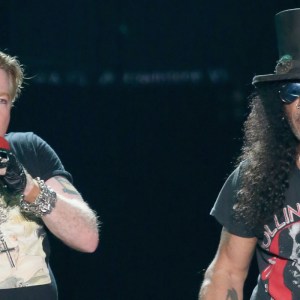The meaning behind one of Panic! at the Disco‘s most recognizable, most enduring, and most nostalgia-inducing hits is full of scandal, deception, and plenty of sins.
Videos by American Songwriter
The emo-baroque pop band released “I Write Sins Not Tragedies” on their 2005 debut, A Fever You Can’t Sweat Out. Along with “Lying Is the Most Fun a Girl Can Have Without Taking Her Clothes Off” and “But It’s Better If You Do,” the album was punctuated by hit after hit, launching the band into stardom and into the angsty hearts of emo and scene kids everywhere.
“I Write Sins Not Tragedies” was met with its share of controversy. For one, the language was a problem when it came to U.S. radio play. An edited version was called for, replacing some of the words or shhh-ing them out altogether, for an all-around more radio-friendly tune. As for the subject matter, well, let’s get into it.
The Origins
While not apparent in the song, the title of “I Write Sins Not Tragedies” was inspired by a passage from Douglas Coupland’s 1992 novel, Shampoo Planet. “I am writing a list of tragic character flaws on my dollar bills with a felt pen,” the main character explains. “I am thinking of the people in my universe and distilling for each of these people the one flaw in their character that will be their downfall—the flaw that will be their undoing. What I write are not sins; I write tragedies.”
The song itself was inspired by heartbreak. The band’s guitarist and main lyricist, Ryan Ross, wrote the story after a breakup with his then-girlfriend. In an attempt to convey his feelings surrounding the split while also admitting things could have been worse, “I Write Sins Not Tragedies” was born.
Behind the Lyrics
The song opens after a wedding has just taken place. From a discussion between bystanders about the lovely ceremony, the groom overhears something about his new bride.
Oh, well, imagine
As I’m pacing the pews in a church corridor
And I can’t help but to hear
No, I can’t help but to hear an exchanging of words
“What a beautiful wedding!
What a beautiful wedding!”, says a bridesmaid to a waiter
“And yes, but what a shame, what a shame
The poor groom’s bride is a whore”
True or not, a cheating scandal has now infiltrated the groom’s thoughts on what should be the happiest day of his life. He is anxious for more information, but his response is instinctual as the chorus floods in.
I chime in with a “Haven’t you people ever heard of
Closing the goddamn door?!”
No, it’s much better to face these kinds of things
With a sense of poise and rationality
He wants to handle the situation himself. He decides the best approach is to figure out the full story by being poise and rational. However, what ensues next is a little confusing.
Oh, well, in fact
Well, I’ll look at it this way
I mean, technically our marriage is saved
Well, this calls for a toast, so pour the champagne
No resolutions to the situation have been laid out in the lyrics. Either the song is heavy with sarcasm or some unknown conversation took place. No questions are ever really answered when, again, the chorus comes crashing in with:
I chime in with a “Haven’t you people ever heard of
Closing the goddamn door?!”
No, it’s much better to face these kinds of things
With a sense of poise and rationality
The song makes for a delightfully dramatic, wonderfully theatrical ear-worm that has endured to this day.
The Music Video
The song’s accompanying music video won Video of the Year at the 2006 MTV Video Music Awards. It depicts a similar story as the one laid out in the song but takes a more vaudevillian approach. The tale opens on a wedding just as the song does.
The bride and groom are at the altar about to wed. The camera pans across the guests all painted in clown make-up. Then, a troupe of carnival folk shows up late, disrupting the event. The group is led by a ringleader, played by the band’s frontman Brendon Urie. He acts as narrator throughout the video and almost as the groom’s conscience, the angel on his shoulder.
An argument breaks out between the two families and the bride runs out of the church upset, tailed by another guest. Urie leads the groom outside to find his betrothed kissing the person who followed her out of the ceremony. What will happen next? Will he handle the situation with poise and rationality?
Watch the melodrama play out, below.
Photo by Debra L Rothenberg/Getty Images
